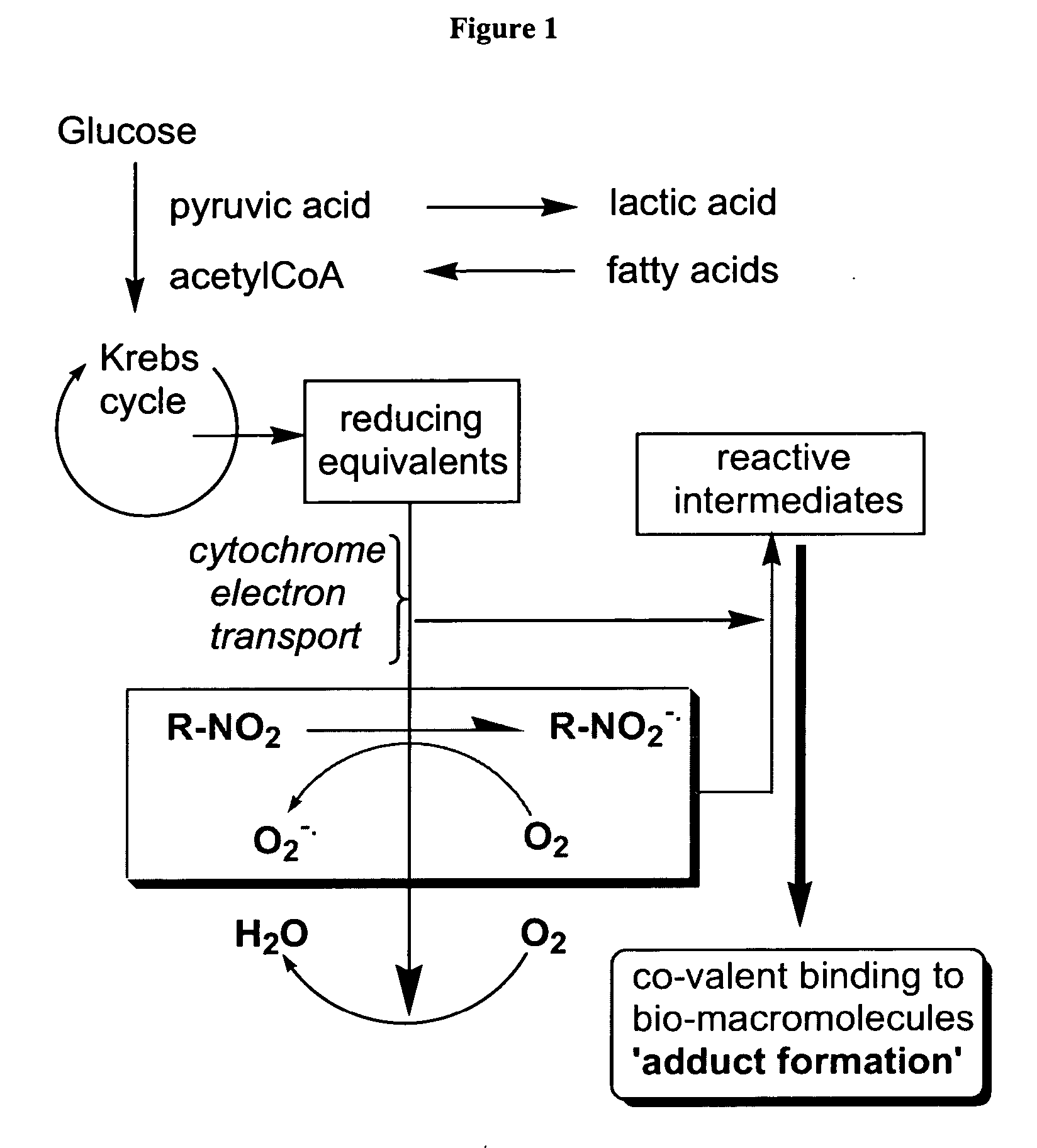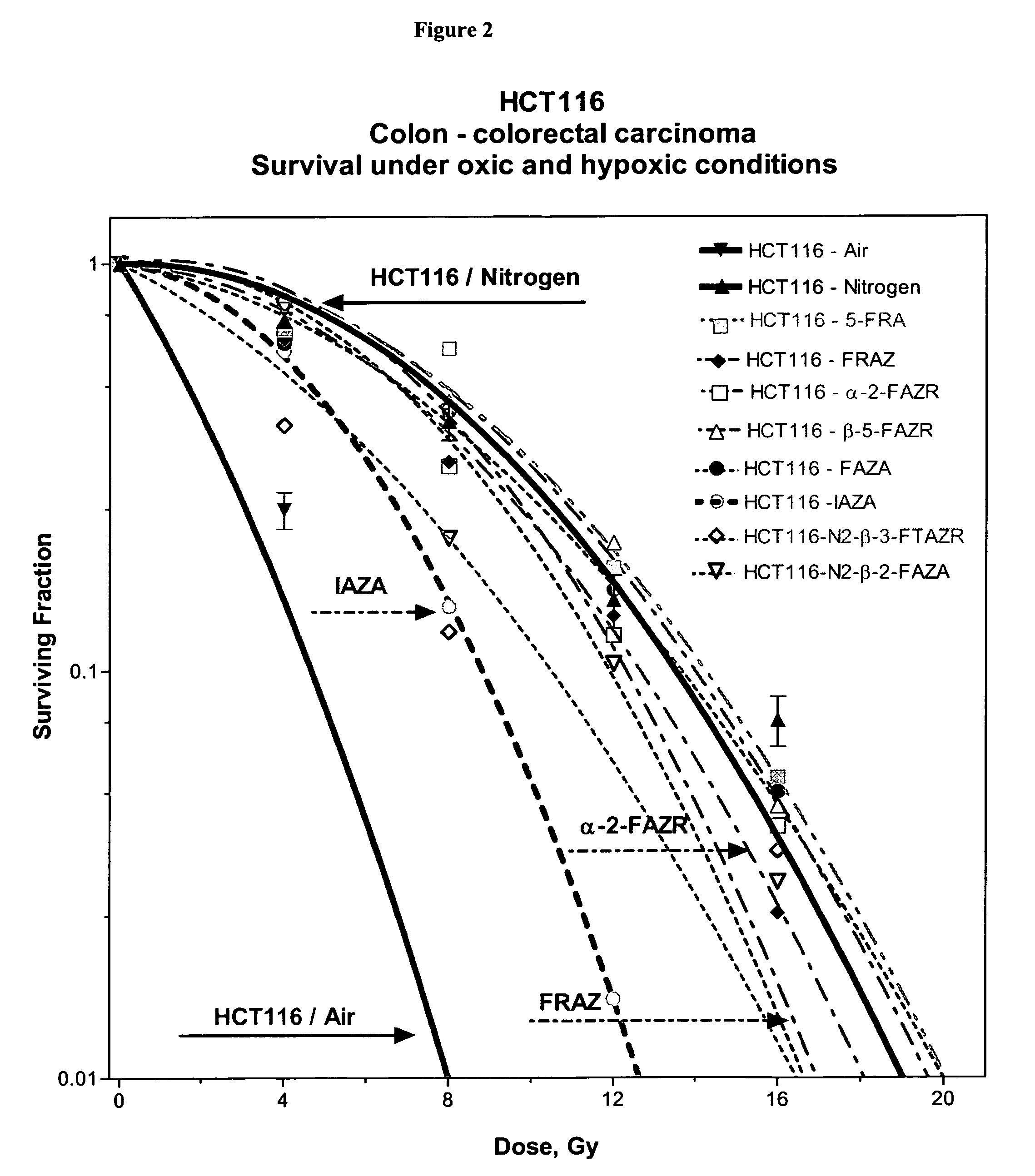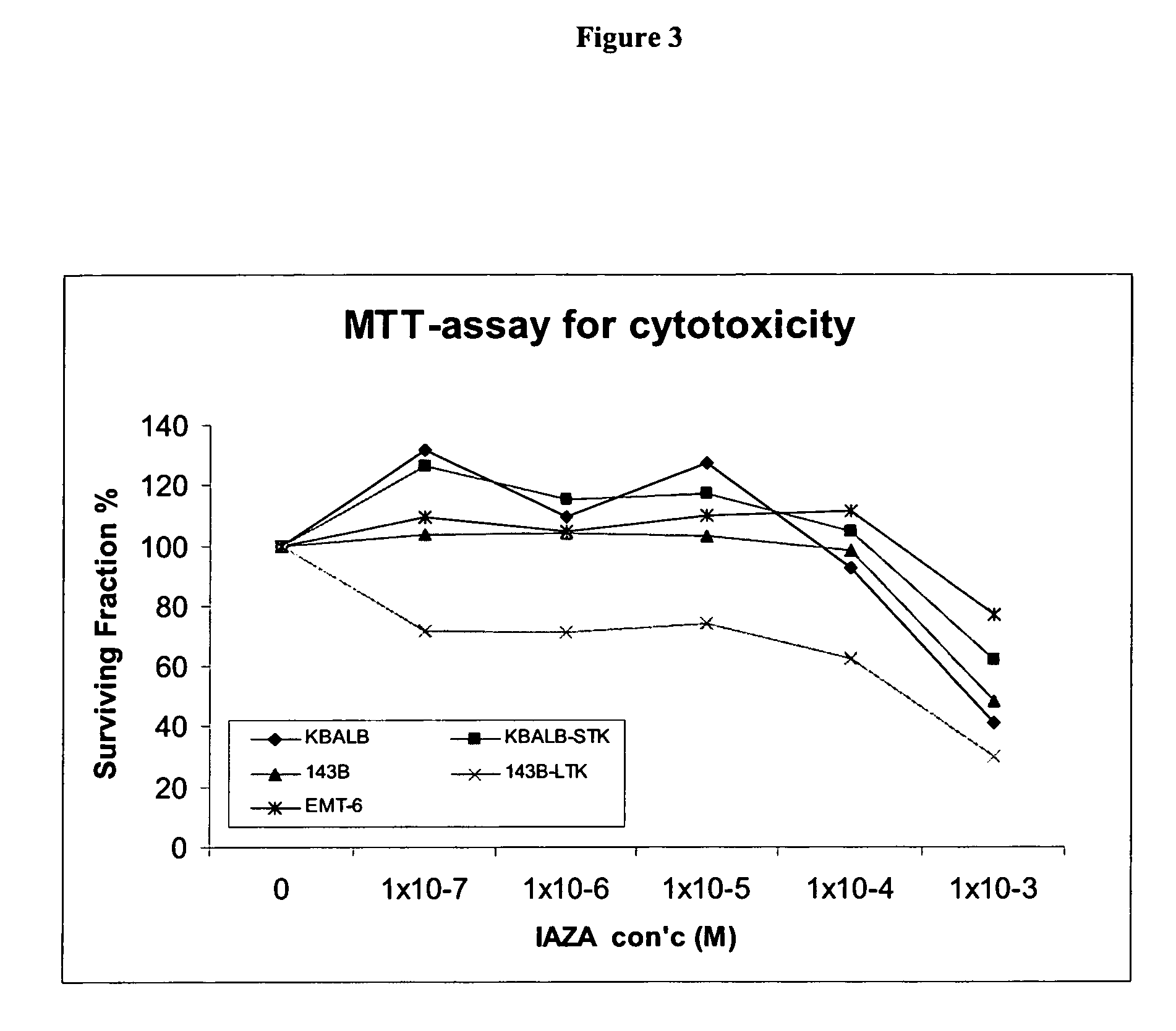Novel compounds for hypoxic cell therapy and imaging
a technology of hypoxia-dependent binding and compounds, applied in the field of human therapeutics, diagnostics, radioimaging and chemotherapy, can solve the problems of selective toxicities, severe reduction of the amount of tracer available for bioreductive activation, and inability to detect hypoxia-dependently, and achieve the effect of facilitating the detection of hypoxic cells
- Summary
- Abstract
- Description
- Claims
- Application Information
AI Technical Summary
Benefits of technology
Problems solved by technology
Method used
Image
Examples
example 1
Preparation of 1-β-D-(Substituted furanosyl / hexopyranosyl)-2-nitroimidazoles
[0165] Main synthons 1-β-D-(3,5-O-Tetraisopropyldisilyloxy ribofuranosyl)-2-nitroimidazole and 1-β-D-(2,3-Di-O-acetyl / benzoyl arabinofuranosyl)-2-nitroimidazoles were prepared by the methods described in the literature (Kumar, P. et al Chem Pharm Bull 51:399 (2003); Kumar, P. et al. Tetrahedron Lett 43:4427-4429 (2002)) and were derivatized to develop the compounds claimed in Genus 1. Few compounds under this sub-category are described below.
1-β-D-(2-O-Methylthiomethyl-3,5-O-tetraisopropyldisilyloxyribofuranosyl)-2-nitroimidazole
[0166] A solution of 1-β-D-(3,5-O-tetraisopropyldisilyloxyribofuranosyl)-2-nitroimidazole (24 mg, 0.05 mmol) in DMSO (0.2 ml) was treated with Ac2O (0.125 ml) and the mixture was stirred at 22° C. for 2 days. Then 1 ml water was added and extracted with EtOAc and the organic phase was washed with water and dried (Na2SO4). After evaporation the residue was chromatographed on silica...
example 2
Preparation of 1-β-D-[(2 / 3 / 5-Substituted) or (2,3-disusbstituted) or (2,2-disubstituted) or (3 / 3-disubstituted) or (2,5-disubstituted) or (3,5-disubstituted) furanosyl / hexopyranosyl)-2-nitroimidazoles.
1-β-D-(2-Deuterio-3,5-O-tetraisopropyldisilyloxyarabinofuranosyl)-2-nitroimidazole
[0175] A stirred suspension of CrO3 (15 mg) in CH2Cl2 (1 ml) was cooled to 0° C. and Ac2O (0.015 ml) and pyridine (0.025 ml) were added. After 3 min, 1-β-D-(3,5-O-tetraisopropyldisilyloxy ribofuranosyl)-2-nitroimidazole (24 mg, 0.05 mmol) was added and then allowed to warm to 5-10° C. over a period of 2 h. Volatile materials were evaporated and the residue was cooled to 0° C. and dissolved in absolute EtOH (1.0 ml). The stirred mixture was treated by addition of NaBD4 (3 mg). After 30 min a second portion of NaBD4 (3 mg) was added and a 2 mg portion was added at 1 h and allowed to warm to 10-12° C. and stirred for 30 min. After evaporation, the residue was chromatographed on a silica column, eluting wit...
example 3
Preparation of 1-β-D-[(2 / 3-Epoxy)-5-susbstitutedfuranosyl / hexopyranosylsyl)-2-nitroimidazoles
1-β-D-[(2 / 3-Epoxy)-5-deoxy-5-fluorofuranosyl / hexosyl)-2-nitroimidazole
[0185] This product was obtained as a side product during the synthesis of 1-β-D-(5-deoxy-5-fluoroarabinofuranosyl)-2-nitroimidazole. It was isolated and characterized by 1H-NMR, 19F-NMR, MS.
1-β-D-[(2 / 3-Epoxy)-2-deutero-5-deoxy-5-fluorofuranosyl / hexosyl)-2-nitroimidazole
[0186] This product was obtained as a side product during the synthesis of 1-β-D-(2-deuterio-5-deoxy-5-fluoroarabinofuranosyl)-2-nitroimidazole. It was isolated and characterized by 1H-NMR, 19F-NMR, MS.
PUM
 Login to View More
Login to View More Abstract
Description
Claims
Application Information
 Login to View More
Login to View More - R&D
- Intellectual Property
- Life Sciences
- Materials
- Tech Scout
- Unparalleled Data Quality
- Higher Quality Content
- 60% Fewer Hallucinations
Browse by: Latest US Patents, China's latest patents, Technical Efficacy Thesaurus, Application Domain, Technology Topic, Popular Technical Reports.
© 2025 PatSnap. All rights reserved.Legal|Privacy policy|Modern Slavery Act Transparency Statement|Sitemap|About US| Contact US: help@patsnap.com



